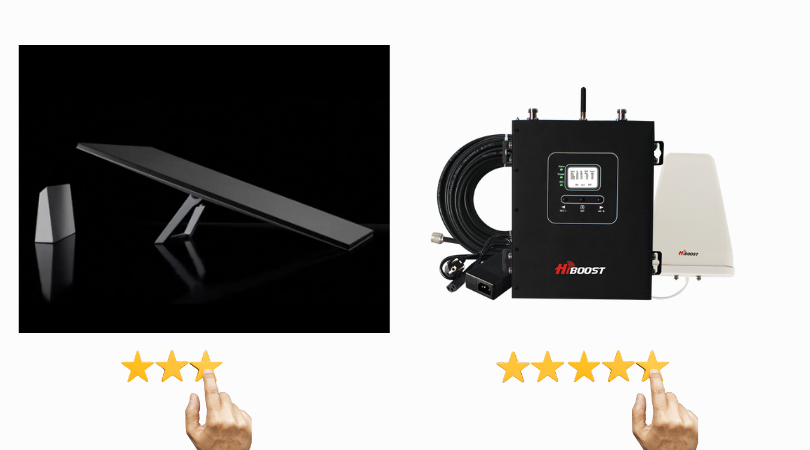Why Choose A Signal Booster Over Starlink ?

Nowadays, being constantly online is a necessity rather than a luxury in our hyperconnected era. Having dependable internet coverage is essential whether you’re working remotely, streaming media, or just staying in contact. Alternatives like SpaceX’s satellite internet service, Starlink, and conventional signal boosters are frequently the preferred alternatives for rural or isolated locations with inadequate or nonexistent broadband infrastructure. Even while Starlink has captured attention for its cutting-edge satellite technology, many customers still find that cell phone signal boosters and mobile repeaters are a more sensible, affordable, and dependable option. This is the reason:
- Cost Effective
One big benefit is the cost of our signal boosters. They might seem expensive at first, but you’ll save a lot of money because there are no monthly fees and they last 10 to 15 years. Depending on its strength and range, our standard mobile signal booster system might cost anywhere from R 5,900 to R 16,500. On the other hand, Starlink’s initial setup fees include a substantial hardware price of around R 18,000, in addition to the R 900 or more monthly membership fee. Signal boosters allow customers who currently have cellular data subscriptions to enhance their connection without the need for any subscription.
- Easy Plug & Play Solution & Simple Maintenance
Installing a signal booster is simple. The majority of kits come with cables to link the indoor amplifier and outdoor antenna. They require very little maintenance once they are set up. In contrast, Starlink requires setting up a satellite dish and making sure it can see the clear sky with no clouds, no mountains or trees as obstructions, which can be difficult in places with a lot of vegetation, tall buildings, or bad weather.
- Works Independent Of Any Satellites
Signal amplifiers operate by strengthening the current cellular signals from neighbouring towers, whilst Starlink uses low-Earth orbit satellites to provide internet. As a result, boosters are immune to latency problems, satellite involves problems, and any service disruptions brought on by satellite failures. A booster can provide dependable access as long as there is a tower within 10km or 30km at most with weak cellular signal to boost. For towers over 20km we supply customised solutions & offer guidance on how to pull signal from faraway towers up to 30km.
- Minimal Latency
Low latency is crucial for any real-time engagement, including video conferencing and online gaming. Cellular networks, which sometimes have lower latency than satellite-based services like Starlink, are used by signal boosters to deliver internet. Even while Starlink’s latency has greatly decreased, it is still often greater than cellular networks, therefore boosters are a preferable choice for jobs that are sensitive to latency.
- Environmentally Friendly
Compared to satellite dishes and the related ground infrastructure needed for Starlink, signal boosters use less electricity. A booster is the more environmentally friendly option for consumers who are concerned about their influence on the environment because of its reduced energy footprint.
- Scalability
Multiple devices can be supported at once by mobile repeaters due to their versatility. You can choose a booster that works for your needs, whether you’re boosting signals for a tiny home or a huge business setup. Although impressive, Starlink’s bandwidth might become constrained when several high-usage devices are connected at once but not with our solutions.
Summary
Even if Starlink is an important advancement in satellite internet technology, not everyone finds it to be the best option. An affordable, dependable, eco-friendly, and simple-to-install and maintain substitute is provided by our signal boosters. Purchasing a signal booster is a wise choice if you reside in a place with spotty but functional cellular service. With this improvement, reliable communication is guaranteed without the high expenses or reliance of satellite-based systems. ensure all electronics devices are ICASA approved


